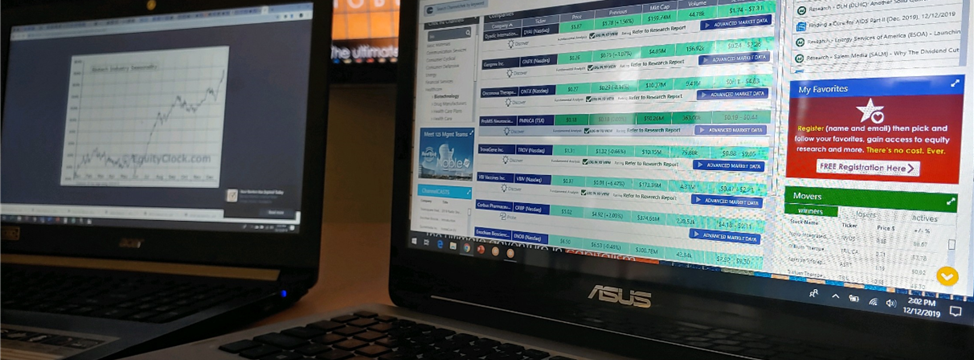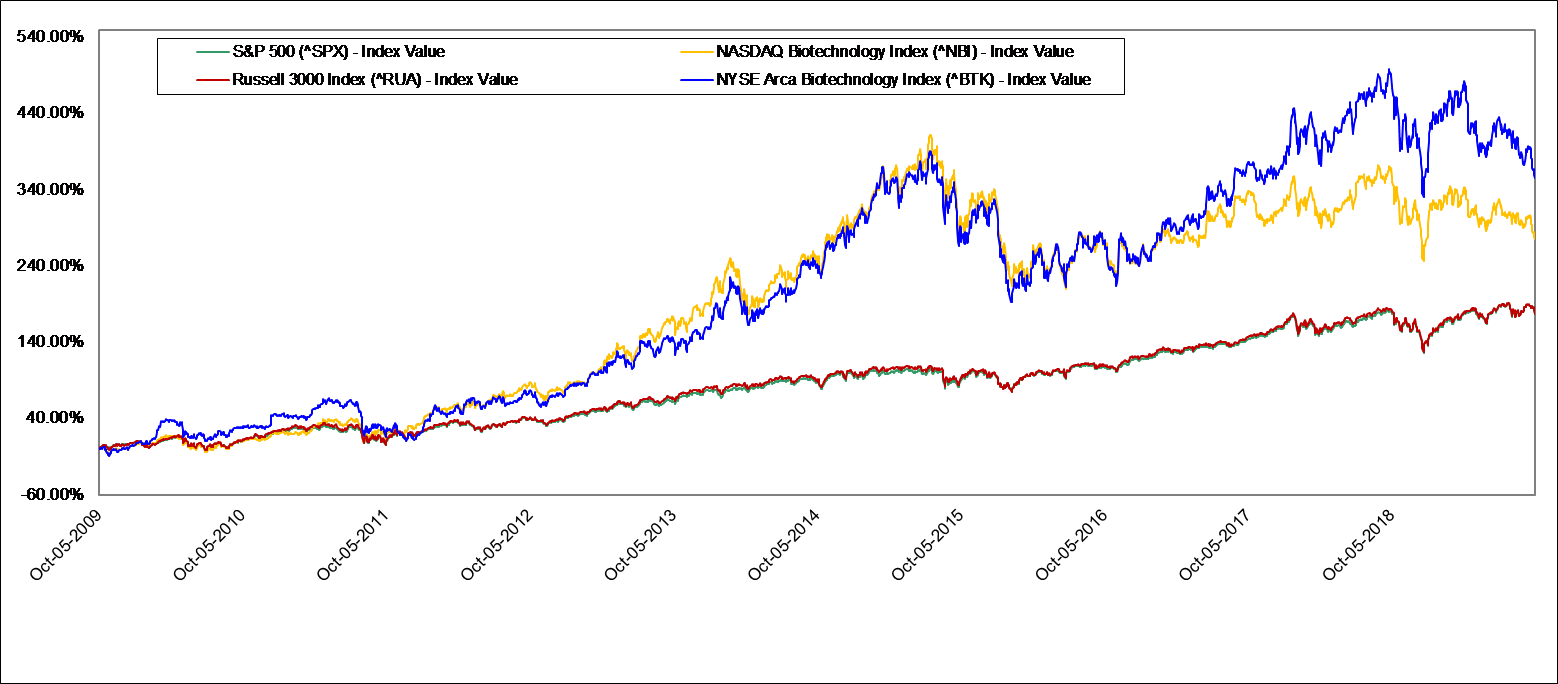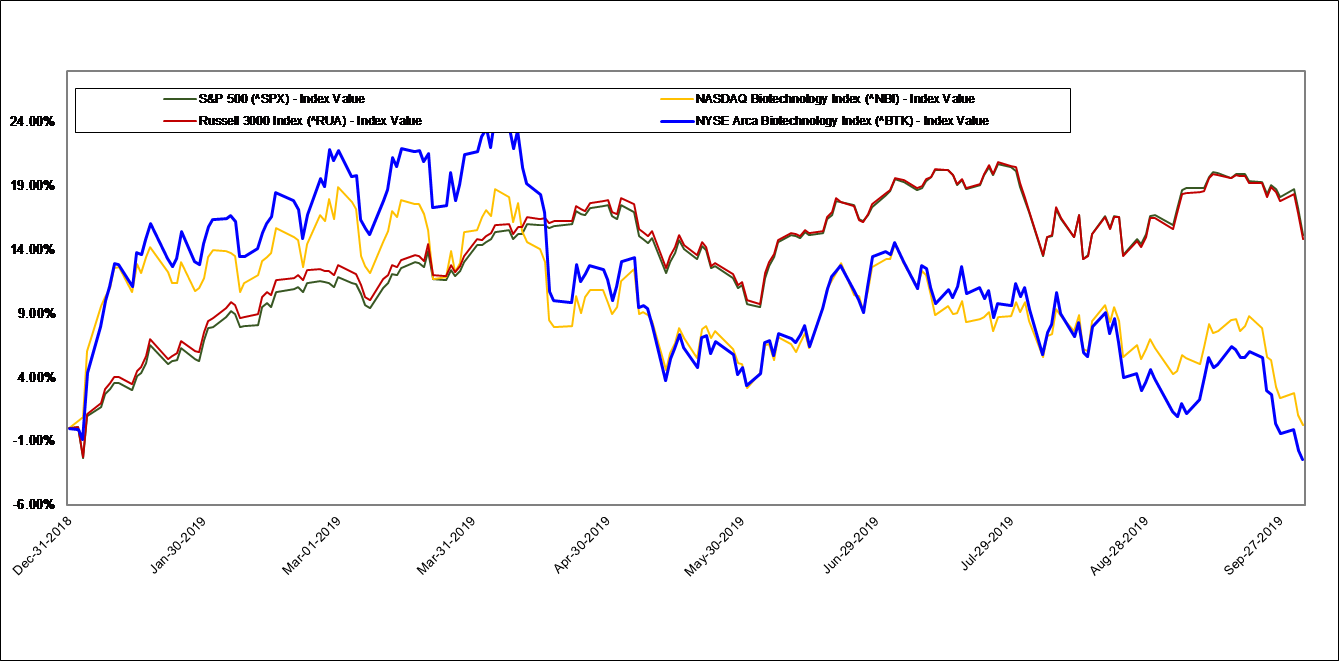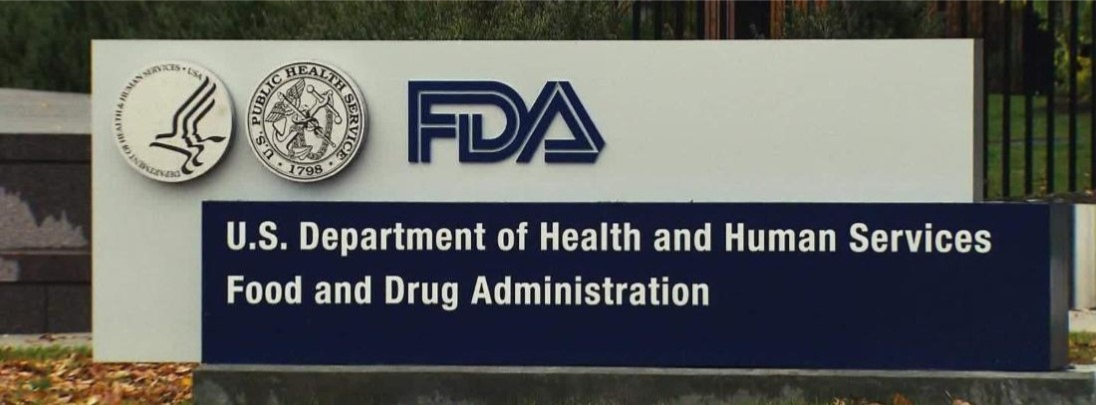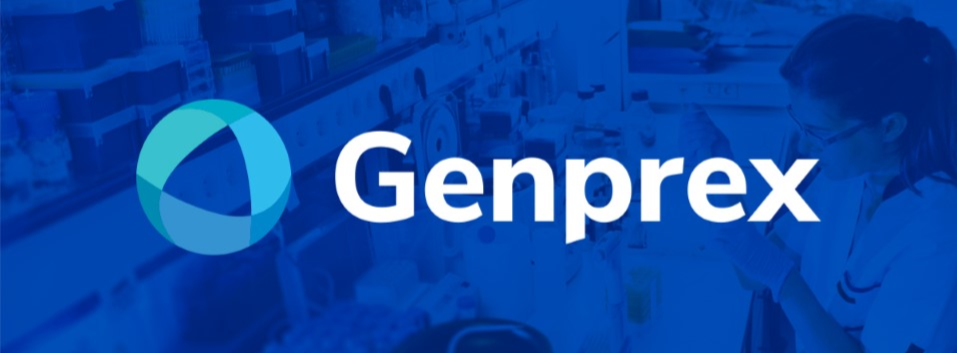
Thursday, September 12, 2019
Biotechnology
Is the Long-awaited Success of Cancer Vaccines Approaching?
Ahu Demir, Ph.D., Biotechnology Research Analyst & Cosme Ordonez, M.D., Ph.D, Senior Life Sciences Analyst, Noble Capital Markets, Inc.
Refer to end of report for Analyst Certification & Disclosures
- Checkpoint inhibitors are blockbuster drugs in cancer. The discovery of immune suppression mechanisms in tumors and approval of checkpoint inhibitors in 2014 have been revolutionary in cancer therapeutics. There are currently six checkpoint (PD1/PD-L1) inhibitors approved in 15 indications including: melanoma, non-small cell lung cancer (NSCLC), head and neck cancer and others (mostly solid tumors). The worldwide (WW) sales of Keytruda (a PD1/PD-L1 inhibitor, the top selling blockbuster drug in cancer market) reached $7.2 billion in 2018.
-
Combination treatment is key. Despite the impressive responses seen in certain cancer types with immune checkpoint inhibitors, there are multiple cancers (cold tumors with low mutational burden) which are resistant to treatment with these drugs. Furthermore, 50% of patients develop resistance to treatment with PD1/PD-L1 agents. PD1/PD-L1 agents are expected to remain as the backbone of treatment, multiple combination approaches are designed to enhance clinical benefit in patients combined with chemotherapy, targeted therapy, secondary checkpoint inhibitors, oncolytic viruses, and vaccines.
- Rationale behind the use of cancer vaccines. Cancer vaccines spur the immune system into recognizing tumor cells as foreign invaders, activating a killing response to destroy them. Key opinion leaders (KOLs) utterly believe that therapeutic vaccines represent the most logical add-on drugs to anti-PD-1/PD-L1 therapy. In recent years, there were lackluster performances from multiple high-profile studies with cancer vaccines. We believe lessons learned from these failed attempts, combined with a deeper understanding of immune surveillance mechanisms, will allow cancer vaccine research to turn the corner and begin to achieve some promising clinical results. In this report, we discuss the current trends and condense our views on this space.
Priming the Immune System
The understanding of T-cell biology and tumor escape mechanisms have built the foundation for immuno-oncology. Cancer cells utilize checkpoints to mask themselves as normal cells, deceiving the immune system and escaping immune attacks. Immune checkpoint inhibitors targeting checkpoint molecules, such as T-cell programmed cell death protein 1 (PD-1) and its ligand PD-L1, reverse this process by blocking this inhibitory signal, thus allowing activated T-cells to find and kill cancer cells. Discovery and approval of checkpoint inhibitors have been revolutionary for cancer treatment in the last decade. The first two PD1/PD-L1 inhibitors were approved in 2014 (Keytruda’s approval in September was followed by Opdivo’s approval in December). There are currently six PD1/PD-L1 inhibitors approved in 15 indications including: melanoma, non-small cell lung cancer and (NSCLC), renal cell carcinoma (RCC), head and neck cancer, Hodgkin’s lymphoma, bladder cancer, merkel cell carcinoma, colorectal cancer, gastric cancer, hepatocellular (liver) cancer (HCC), cervical cancer, diffuse large B-cell lymphoma (DLBCL), small cell lung cancer (SCLC), squamous cell carcinoma (SCC), breast cancer and esophageal cancer. Keytruda has become a blockbuster drug, dominating the cancer market as the top selling medicine in the space. Keytruda’s worldwide (WW) sales in 2018 reached $7.2 billion (+89% compared to WW sales in 2017). By 2024, Evaluate Pharma projects $38.9 billion of total sales of PD1/PD-L1 inhibitors, $18.0 billion (46% of total PD1/PD-L1 WW sales) sales from Keytruda alone (Exhibit 1).
Exhibit 1. Currently Approved Checkpoint Inhibitor Projected Sales

Source: Evaluate Pharma, Noble Research
Despite the impressive effectiveness of immune checkpoint inhibitors in certain cancers, there are many other cancer types, known as cold tumors (such as cervical cancer), which remain unresponsive to these drugs. Furthermore, 50% of patients who respond to therapy develop resistance to treatment with PD1/PD-L1 agents. Therefore, the scientific community continues its efforts to develop more effective treatment methodologies using combinational regimens. Experts agree that PD1/PD-L1 agents remain as the backbone of treatment. There are multiple combination approaches that are underway; including combination with chemotherapy, targeted therapy, secondary checkpoint inhibitors, oncolytic viruses, and vaccines. In this report, we highlight some interesting assets in cancer vaccine space.
Key opinion leaders (KOLs) consistently utter therapeutic vaccines representing the most logical add-on to anti-PD-1/PD-L1 therapy. In the last couple of years, there were lackluster performances from multiple high-profile studies (Celldex’s rindopepimut, Newlink Genetics’s algenpantucel-L, Aduro’s CRS-207/GVAX, Bavarian Nordic’s Prostvac and Advaxis’s Axalimogene filolisbac). Cancer vaccine space still lacks a convincing combination data set.
How Do Therapeutic Cancer Vaccines Work?
Cancer vaccines spur the immune system into recognizing tumor cells as invaders to be destroyed by the immune system. Tumor cells often express distinct antigens (molecules expressed on the cell surface that evoke immune system); known as tumor-associated antigens (TAAs), tumor-specific antigens (TSA), and neoantigens that are created by point mutations, insertions, deletions, or translocations that produce novel amino acid sequences present only in the tumor and not in normal cells. Recent efforts have been focused on the development of cancer vaccines based on neoantigens (e.g. Advaxis’s ADXS-NEO program, Genocea’s GEN-009 and GEN-011 programs).
Broadly, vaccines are classified as DNA/RNA, protein and cell-based vaccines.
1. Genetic Vaccines (DNA/RNA vaccines) are introduced into the genetic material of host cells stimulating an immune response. To date, there are currently no genetic vaccines approved.
2. Protein/peptide vaccines are composed of purified or recombinant antigen peptides from pathogens. Upon administration to cancer patients, an immune response is elicited against the pathogen to neutralize it, also training the host immune system to become ready to combat subsequent infections by the same micro-organism. Most vaccines approved for human use are protein vaccines. Preventive cancer vaccines, Gardasil and Cervarix, which are peptide-based, were approved by the Food and Drug Administration (FDA). However, there are no approved therapeutic cancer protein/peptide-based vaccines yet.
3. Cell-based vaccines have been studied for over 20 years. They are one of the most extensively researched vaccine types. Various cell types can be used to develop cell-based vaccines. For example, antigen-presenting cells (APC) are taken from patients, altered to efficiently elicit an immune response, and finally introduced back into cancer patients. Multiple antigens can be targeted by the immune system and this can be further augmented by genetic alteration of vaccine cells to provide induced release of cytokines and co-stimulatory molecules. In 2010, Sipuleucel-T (Provenge), an autologous cellular (dendritic cell, a type of APC) immunological agent, was approved to treat metastatic castration-resistant prostate cancer (mCRPC). Provenge works through APCs to stimulate a T-cell immune response targeted against prostatic acid phosphatase (PAP), an antigen that is highly expressed in most prostate cancer cells. However, it failed to show a survival benefit and did not perform well commercially. Following multiple acquisitions (Dendreon filed for voluntary bankruptcy; Valeant acquired the WW rights to Provenge and certain other Dendreon assets for $400MM in 2015; Sanpower Group acquired Provenge from Valeant for $819.9M in January 2017), Provenge’s sales did not improve.
4. Bacterial-based vaccines are developed by live-attenuated bacterial strains that are engineered to deliver recombinant heterologous antigens to stimulate the host immune system. These live vectors can stimulate cellular systemic immunity and also deliver DNA vaccines and immune system stimulatory molecules, such as cytokines. The Bacillus Calmette-Guerin (BCG) is an attenuated strain of Mycobacterium bovis, which has been broadly used as a vaccine for the treatment of human tuberculosis and also as an immunotherapeutic agent against bladder cancer.
5. Viral-based vaccines are developed by attenuated or less virulent viruses that induce protective immunity. Similar to bacterial-based vaccines, they can also be genetically engineered to deliver and express antigens capable of inducing anti-tumor elicit immune responses. Imlygic is a genetically modified herpes simplex virus type 1. It is engineered to express granulocyte-macrophage colony-stimulating factor (GM-CFS, immune-boosting cytokine). Imlygic received FDA approval in 2015 for local treatment of unresectable cutaneous, subcutaneous, and nodal lesions in melanoma recurring after initial surgery. Imlygic’s exact mechanism of action remains unclear. It is thought that cancer cells rupture following viral replication, releasing tumor-derived antigens, together with virally encoded GM-CSF, which can stimulate an immune response against the tumor. Imlygic has not been commercially successful.
Exhibit 2. Cancer Vaccine Platforms include five classes of vaccines: Nucleic acids, Synthetic peptides, Recombinant Proteins, and Viral/Bacterial vectors. The diagram depicts the various immune system pathways involved.

Source: Maeng et al. F1000Research 2019
Combination with a chimeric antigen receptor (CAR) T-cell therapy is another potential application of cancer vaccine. Two CAR-T cell therapies; Novartis’ Kymriah and Gilead’s Yescarta, were approved for the treatment of blood cancers (pediatric acute lymphoblastic leukemia and non-Hodgkin’s lymphoma, respectively). CAR-T therapy has shown limited efficacy against solid tumors. The limitations in solid tumors include heterogeneity of antigens, tumor microenvironment (expression of immune-suppressing agents such as PD-1) and delivery (difficulty to access the tumor site). Therapeutic vaccination is one of the approaches with the potential to enhance CAR-T therapies in solid tumors.
Our take: It is well established that the immune system is highly complex. The complexity and heterogenicity of cancer cell expression to suppress immunity represents a major challenge to develop effective cancer treatments. In addition, identifying a single uniform pathway to activate the immune system against a growing tumor continues to be a daunting task. Despite recent revolutionary discoveries of checkpoint inhibitors and CAR-T therapies, further development of effective combinational therapies is critical (Figure 3). Lessons learned from these failed attempts are now allowing cancer vaccine research to turn the corner and begin to achieve some promising clinical results. We believe some of the key lessons driving this progress are 1) the need for identification of multiple, immunogenic antigens; 2) the importance of highly potent vaccine vectors; and 3) a deeper understanding of tumor-mediated immunosuppression.
There are multiple new strategies to:
- enable the selection and construction of more immunogenic TAAs and the identification of tumor-specific neoantigens
- enhance vaccine technologies, including viral vector prime-boost approaches, better co-stimulatory components, multi-antigen vaccines, and stimulation of both CD8 and CD4 T cells response
- discover more effective combinations with checkpoint modulators and other new drugs that reverse immunosuppression
While it is encouraging to hear many KOLs suggesting that vaccines represent the most rational agents to combine with immune checkpoint inhibitors (also for CAR-T cell therapy), we recognize the high risks associated with vaccine development. We believe the lessons learned from past failures and scientific advancement will help achieve more promising combinational strategies (with chemotherapy, checkpoint inhibitors, costimulatory agents, targeted agents, and CAR-Ts) incorporating vaccines in cancer treatment.
Figure 3. The multiple pathways to elicit effective anti-tumor immune responses. Each pathway offers opportunities for therapeutic intervention in order to increase vaccine ef?cacy

Source: Vermaelen et al. Frontiers in Immunology Review, 2019
VACCINE WATCH
Below, small cap public and private biopharmaceutical companies are highlighted with current programs in vaccine development for cancer therapeutics (alphabetical order).
Advaxis, Inc. (Nasdaq: ADXS, Not Covered by Noble), MC $6mm
Advaxis’s vaccine uses a Listeria monocytogenes (Lm) technology-based delivery system to introduce antigens and elicit the immune response against cancer. The company has multiple clinical programs including personalized (ADXS-NEO) and off-the-shelf (ADXS-HOT) neoantigen directed therapies. The key value-driving catalysts include; a) additional immunogenicity and clinical data readouts, b) commencement of Part B in combination with checkpoint inhibitor for ADXS-NEO and ADXS-HOT (in non-small cell lung cancer) programs in H2 2019, c) investigational new drug (IND) submission for ADXS-HOT in prostate and bladder cancer in H2 2019 and H1 2020, respectively.
Elicio Therapeutics (Private company)
Elicio uses an amphiphile platform to generate nanoparticle-based immunotherapies. Antigens carrying amphiphile particles are designed to concentrate on the target lymph node to act as immune cell activators, immunomodulators, and vaccines for multiple aggressive cancers. Elicio’s lead Amphiphile vaccine, ELI-002, targets KRAS-driven pancreatic and colorectal cancers. Preclinical studies in mouse models demonstrated T cell activation and tumor regression. In June 2019, preclinical data from Elico’s amphiphile particle vaccine enhancing CAR-T cell therapy in murine solid tumors was published in Science journal. Elicio plans to commence Phase 1 study of ELI-002 for the treatment of pancreatic and colorectal cancer patients in H1 2020.
Generex Biotechnology (OTC: GNBT, Not Covered by Noble), MC $150mm
NuGenerex Immuno-Oncology, a subsidiary of Generex, is developing novel immunotherapy and vaccine formulations based on Ii-Key hybrid peptides and li-suppression technology. NuGenerex’s pipeline targets multiple therapeutic areas including oncology, infectious diseases, and autoimmune disorders. The lead candidate, AE37 (a peptide vaccine containing HER2/Neu-derived epitope linked to li-Key peptide) is currently being assessed in combination with pembrolizumab for the treatment of triple-negative breast cancer in Phase a 2 clinical study. Data readouts are expected in 2020.
Genocea Biosciences Inc. (Nasdaq: GNCA, Not Covered by Noble), MC $89mm
Genocea, a biopharmaceutical company, discovers and develops novel cancer immunotherapies. The company uses ATLAS, a proprietary discovery platform to direct the patient’s pre-existing CD4+ and CD8+ T-cell immune responses to tumors by identifying neoantigens and antigens. These antigens are incorporated in vaccines to activate T-cells against cancer cells. The company presented data from GEN-009 program, an adjuvanted neoantigen peptide vaccine, at the American Society of Clinical Oncology annual meeting in June 2019. Additional immunogenicity and efficacy data readouts from this lead program in combination with standard-of-care checkpoint inhibitors are anticipated in H2 2019-2020. The second asset GEN-011, neoantigen-specific T cell therapy, is expected to advance in the clinic in 2020.
Morphogenesis, Inc. (Private company)
Morphogenesis, a biotechnology company, is developing personalized immunotherapies for the treatment of cancer. The Company’s lead asset, ImmuneFx Cancer Vaccine, is based on a single bacterial gene that is expressed on the surface of a patient’s tumor cells, educates the immune system to target the patient’s unique set of tumor antigens (neoantigens). In August 2018, the company launched the first human clinical phase I ImmuneFx study for the treatment of aggressive melanoma. The preliminary data is expected in 4Q 2019.
NexImmune Inc. (Private company)
NexImmune is a biotechnology company developing immunotherapies based on proprietary AIM technology. This nanotechnology platform uses the body’s own immune system to stimulate and orchestrate T cell response against disease, including AML/MDS and solid tumors. Central to the AIM technology is artificial Antigen Presenting Cells (aAPC) that present antigens to T-cells eliciting an anti-tumorigenic response from the patient’s own immune system. Its pipeline consists of NEXI-001, NEXI-002, and NEXI-003. All three programs require ex-vivo manipulation of antigen-presenting cells (APC) to express T cell-stimulating antigens. All three programs are slated to initiate Phase I clinical trial in 4Q 2019.
Nouscom (Private company)
Nouscom is developing immunotherapies from its proprietary platforms that utilize a library of uniquely engineered viral vectors for expression of long strings of tumor neoantigens (off-the-shelf and personalized). It’s lead program, NOUS-209 is able to induce development and expansion of T cell population, including memory T cells. NOUS-209 encodes 209, a unique cancer neoantigens found in multiple tumor types. The company anticipates commencing a Phase 1 clinical trial of NOUS-209, a therapeutic vaccine for gastric, colorectal, and gastro-esophageal junction microsatellite instable (MSI) cancers (tumors characterized by a defective DNA mismatch repair system) in combination with pembrolizumab. The trial is expected to enroll up to 30 patients and to begin Q3 2019. The initial clinical data is expected in H1 2020.
Sensei Biotherapeutics (Private company)
Sensei is developing precision cancer therapeutics that target a novel and tumor-specific antigen called ASPH, or aspartate β-hydroxylase. ASPH is expressed in more than 20 cancer types, both solid and hematologic tumors. It also is associated with poor patient survival. Sensei’s lead candidate SNS-301 is a cancer vaccine that has completed a Phase 1 clinical study demonstrating a safe profile and dose-dependent ASPH-specific CD8+ T cells and B-cell responses. Based on these results, Sensei announced a clinical trial collaboration agreement with AstraZeneca for Phase 2 trials for SNS-301 in combination with durvalumab in multiple solid tumors in May 2019. The company plans to initiate Phase 2 studies for SNS-301 in various hematological malignancies and solid tumors in H2 2019.
Targovax ASA (OB: TRVX, Not Covered by Noble), MC $330mm
Targovax, a clinical-stage immuno-oncology company develops immunotherapies (oncolytic viruses and vaccines) for cancer patients. The lead product ONCOS-102, a genetically modified oncolytic adenovirus, has been engineered to selectively infect and replicate in cancer cells. ONCOS-102 is in Phase 1/2 clinical studies for the treatment of mesothelioma, melanoma, peritoneal disease, and prostate cancer. In addition, the company is developing neoantigen cancer vaccine targeting tumors that express mutated forms of RAS. The TG vaccine program has previously shown a signal of efficacy in a 32- patient trial with TG01 in resected pancreatic cancer. A next-generation product candidate, TG02 is currently been evaluated as monotherapy and will also be assessed in combination with Keytruda.
Torque Therapeutics (Private company)
Torque is a clinical-stage immuno-oncology company developing Deep-Primed™ T cell therapeutics to direct immune response within the tumor microenvironment. Torque’s lead product candidate TRQ-1501 (IL-15 Primed T cells) is in Phase 1/2 clinical trial for the treatment of solid tumors and hematologic malignancies. On June 2019, the FDA granted fast track designation for TRQ-1501. The company is currently assessing TRQ-1501 in a Phase I/2 clinical trial for the treatment of solid cancers and lymphoma as a single agent and in combination with Keytruda (pembrolizumab). Data is anticipated in 2020.
UbiVac, Inc. (Private Company)
UbiVac, LLC, a biotechnology company focuses on the development of therapeutic vaccines to combat cancer and infectious diseases. Its product includes DPV-001 (DRibble), a DC-targeted complex vaccine/combination immunotherapy for the adjuvant treatment of non-small cell lung cancer (NSCLC). The company also provides immunotherapeutic products that include DRibble (DPV-002); nano particle, such as NP-001; and CMV vector, including sdCMV-001 and sdCMV-002.
Vaccibody (Private company)
Vaccibody is a clinical-stage biopharmaceutical company, focused on the discovery and development of novel immunotherapies. Vaccibody is developing individualized cancer neoantigen vaccines. Vaccibody’s candidate VB10. NEO is currently being assessed in Phase1/2 to treat metastatic melanoma, non-small cell lung carcinoma, renal cell carcinoma and urothelial or squamous cell carcinoma of head and neck. In addition, the company has a collaboration with Nektar Therapeutics, to test VB10.NEO in combination with bempegaldesleukin (NKTR-214) in squamous cell carcinoma of head and neck. The second asset (VB10.16) is a therapeutic DNA vaccine against HPV16 induced pre-malignancies and malignancies. VB10.16 is being evaluated in combination with checkpoint inhibitor atezolizumab (Tecentriq) in up to 50 patients with advanced or recurrent cervical cancer in collaboration with Roche. The first patient in this study is expected to be vaccinated in Q1 2020.
Vaxart Inc. (Nasdaq: VXRT, Not Covered by Noble), Market Cap (MC) $11 million (mm)
Vaxart, Inc., a clinical-stage company, engages in the discovery and development of oral recombinant protein vaccines based on its proprietary oral vaccine platform. The company’s pipeline assets that are in clinical trials include; monovalent and bivalent norovirus vaccines and monovalent, quadrivalent and universal H1 flu vaccines. The company recently reported full enrollment in the Phase 1b bivalent norovirus vaccine study. The topline results are expected by October 2019. In addition, the company is developing a therapeutic immune-oncology vaccine for cervical cancer by the human papillomavirus, which is at preclinical stage.
GENERAL DISCLAIMERS
All statements or opinions contained herein that include the words “we”, “us”, or “our” are solely the responsibility of Noble Capital Markets, Inc.(“Noble”) and do not necessarily reflect statements or opinions expressed by any person or party affiliated with the company mentioned in this report. Any opinions expressed herein are subject to change without notice. All information provided herein is based on public and non-public information believed to be accurate and reliable, but is not necessarily complete and cannot be guaranteed. No judgment is hereby expressed or should be implied as to the suitability of any security described herein for any specific investor or any specific investment portfolio. The decision to undertake any investment regarding the security mentioned herein should be made by each reader of this publication based on its own appraisal of the implications and risks of such decision.
This publication is intended for information purposes only and shall not constitute an offer to buy/sell or the solicitation of an offer to buy/sell any security mentioned in this report, nor shall there be any sale of the security herein in any state or domicile in which said offer, solicitation or sale would be unlawful prior to registration or qualification under the securities laws of any such state or domicile. This publication and all information, comments, statements or opinions contained or expressed herein are applicable only as of the date of this publication and subject to change without prior notice. Past performance is not indicative of future results.
Noble accepts no liability for loss arising from the use of the material in this report, except that this exclusion of liability does not apply to the extent that such liability arises under specific statutes or regulations applicable to Noble. This report is not to be relied upon as a substitute for the exercising of independent judgement. Noble may have published, and may in the future publish, other research reports that are inconsistent with, and reach different conclusions from, the information provided in this report. Noble is under no obligation to bring to the attention of any recipient of this report, any past or future reports. Investors should only consider this report as single factor in making an investment decision.
IMPORTANT DISCLOSURES
This publication is confidential for the information of the addressee only and may not be reproduced in whole or in part, copies circulated, or discussed to another party, without the written consent of Noble Capital Markets, Inc. (“Noble”). Noble seeks to update its research as appropriate, but may be unable to do so based upon various regulatory constraints. Research reports are not published at regular intervals; publication times and dates are based upon the analyst’s judgement. Noble professionals including traders, salespeople and investment bankers may provide written or oral market commentary, or discuss trading strategies to Noble clients and the Noble proprietary trading desk that reflect opinions that are contrary to the opinions expressed in this research report.
The majority of companies that Noble follows are emerging growth companies. Securities in these companies involve a higher degree of risk and more volatility than the securities of more established companies. The securities discussed in Noble research reports may not be suitable for some investors and as such, investors must take extra care and make their own determination of the appropriateness of an investment based upon risk tolerance, investment objectives and financial status.
Company Specific Disclosures
The following disclosures relate to relationships between Noble and the company (the “Company”) covered by the Noble Research Division and referred to in this research report.
Noble is not a market maker in any of the companies mentioned in this report. Noble intends to seek compensation for investment banking services and non-investment banking services (securities and non-securities related) with any or all of the companies mentioned in this report within the next 3 months
ANALYST CREDENTIALS, PROFESSIONAL DESIGNATIONS, AND EXPERIENCE
Ahu Demir
Equity Research Analyst focusing on the Life Sciences sector. 5 years of industry experience. PhD in Chemistry from University of Florida.Post Doctoral training at Columbia University and New York University. Her scientific training focused on antiviral therapy, oncology and immuno-oncology.
FINRA licenses 7, 63, 86, 87.
Cosme Ordonez
Senior Equity Analyst focusing on Life Sciences. More than 16 years of experience in his field. Former President and co-founder of Ciclofilin Pharmaceuticals. Held various roles in Buy-side and Sell-Side specializing in drug development, medical device, specialty pharma and healthcare services areas. Medical Doctor with a Ph.D. in Experimental Medicine and Biochemistry from McGill University in Montreal, Canada. Completed post-doctoral training at the Karolinska Institute/Hospital in Stockholm, Sweden.
Holds FINRA licenses 7, 79, 86, 87.
WARNING
This report is intended to provide general securities advice, and does not purport to make any recommendation that any securities transaction is appropriate for any recipient particular investment objectives, financial situation or particular needs. Prior to making any investment decision, recipients should assess, or seek advice from their advisors, on whether any relevant part of this report is appropriate to their individual circumstances. If a recipient was referred to Noble Capital Markets, Inc. by an investment advisor, that advisor may receive a benefit in respect of transactions effected on the recipients behalf, details of which will be available on request in regard to a transaction that involves a personalized securities recommendation. Additional risks associated with the security mentioned in this report that might impede achievement of the target can be found in its initial report issued by Noble Capital Markets, Inc.. This report may not be reproduced, distributed or published for any purpose unless authorized by Noble Capital Markets, Inc..
RESEARCH ANALYST CERTIFICATION
Independence Of View
All views expressed in this report accurately reflect our personal views about the subject securities or issuers.
Receipt of Compensation
No part of our compensation was, is, or will be directly or indirectly related to any specific recommendations or views expressed in the public
appearance and/or research report.
Ownership and Material Conflicts of Interest
Neither analyst nor anybody in either analyst’s household has a financial interest in the securities of the subject company or any other company mentioned in this report.
| NOBLE RATINGS DEFINITIONS |
% OF SECURITIES COVERED |
% IB CLIENTS |
|
Outperform: potential return is >15% above the current price
|
86% |
25% |
| Market Perform: potential return is -15% to 15% of the current price |
14% |
2% |
| Underperform: potential return is >15% below the current price |
0% |
0% |
NOTE: On August 20, 2018, Noble Capital Markets, Inc. changed the terminology of its ratings (as shown above) from “Buy” to “Outperform”, from “Hold” to “Market Perform” and from “Sell” to “Underperform.” The percentage relationships, as compared to current price (definitions), have remained the same.
Additional information is available upon request. The recipient of this report who wishes further information regarding the subject company or the disclosure information mentioned herein, should contact Noble Capital Markets, Inc. by mail or phone.
Noble Capital Markets, Inc.
225 NE Mizner Blvd, Suite 150
Boca Raton, FL 33432
561-994-1191
Noble Life Science Partners is a division of Noble Capital Markets, Inc..
Noble Capital Markets, Inc. is a FINRA (Financial Industry Regulatory Authority) registered broker/dealer.
Noble Capital Markets, Inc. is an MSRB (Municipal Securities Rulemaking Board) registered broker/dealer.
Member – SIPC (Securities Investor Protection Corporation)
Report ID: 11088




